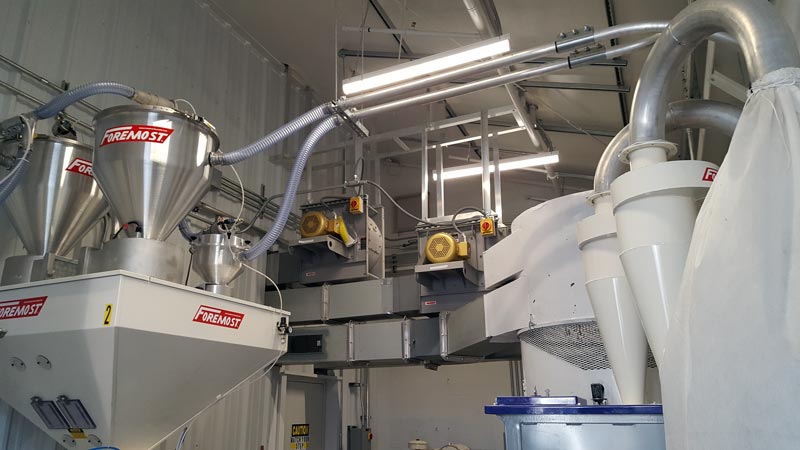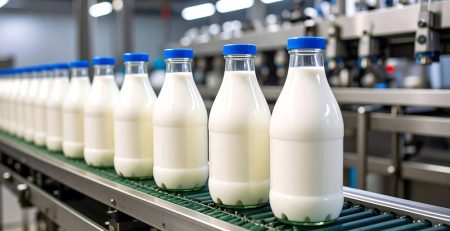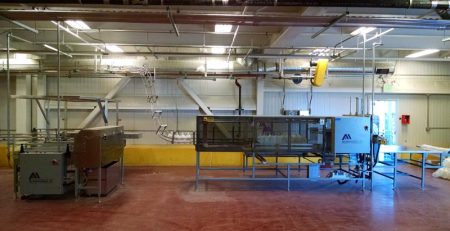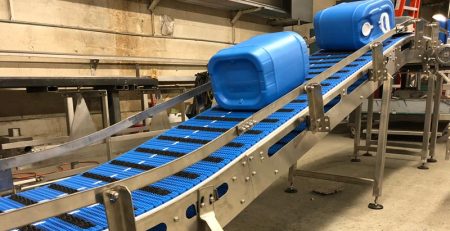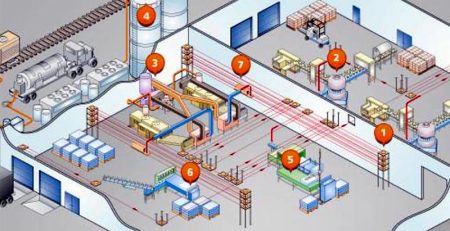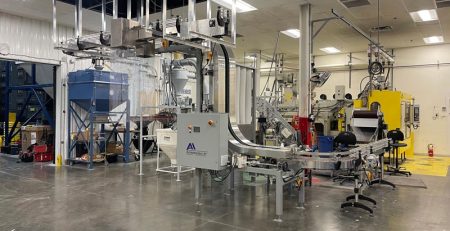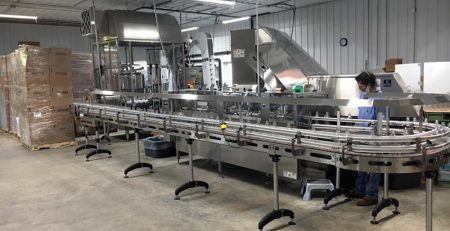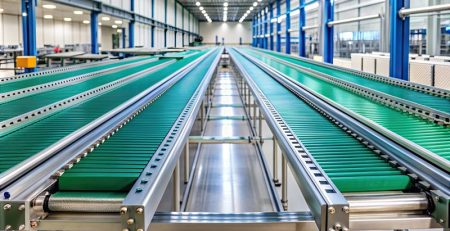As manufacturing industries move into 2025, the material handling landscape continues to evolve rapidly, driven by advancements in automation, sustainability, and digital integration. For operations that rely heavily on efficient scrap and resin management—such as plastics, packaging, automotive, and food processing—staying ahead of these changes is crucial. By embracing the latest material handling innovations, manufacturers can boost productivity, reduce waste, and future-proof their processes.
This blog explores the top material handling trends expected to make the biggest impact in 2025, with a special focus on scrap and resin applications.
1. Smart Conveyors and AI-Driven Routing
The convergence of artificial intelligence (AI) and conveyor systems is ushering in a new era of intelligent material flow. Smart conveyors equipped with sensors, vision systems, and real-time data analytics are becoming a staple in facilities managing scrap and resin. These systems can dynamically adjust speed, routing, and load balance to optimize throughput and minimize bottlenecks.
AI-driven routing is particularly useful in scrap recovery lines, where sorting by material type, color, or density is essential. By automating decision-making and enabling predictive maintenance, smart conveyors improve both efficiency and equipment longevity.
2. Pneumatic Conveying Systems for Resin Transport
Pneumatic conveying continues to gain traction as an efficient and clean method for transporting plastic resin pellets. In 2025, expect to see further innovation in vacuum and pressure-based systems that reduce material degradation, minimize contamination, and offer greater flexibility for facility layout.
Newer systems now feature advanced flow controls, anti-static technologies, and integration with centralized control platforms. These enhancements make pneumatic conveying an ideal choice for resin transport in high-volume or cleanroom environments.
3. Automated Scrap Collection and Segregation
Scrap handling has traditionally been labor-intensive, but the shift toward automation is changing the game. In 2025, automated scrap collection systems will become more widespread, using sensors, robotics, and programmable logic controllers (PLCs) to identify, separate, and transport scrap material.
Industries managing various types of plastic, metal, or fiber waste will benefit from these systems by improving recycling rates, reducing labor costs, and increasing overall plant safety. Integration with ERP and MES software also allows for better tracking of scrap generation and disposal.
4. Modular and Scalable System Designs
As companies demand more flexible operations, modular material handling systems are rising in popularity. These systems can be easily reconfigured or expanded as production needs evolve, which is especially beneficial in dynamic environments handling scrap and resins from multiple sources.
In 2025, we expect modularity to extend to conveyor lines, hoppers, shredders, and storage silos—giving manufacturers more control over system growth and reducing the need for extensive downtime during upgrades.
5. Sustainability and Energy Efficiency
Sustainable operations are no longer optional. Material handling systems in 2025 will be increasingly designed with energy efficiency and environmental responsibility in mind. Expect to see more:
- Energy-efficient motors
- Regenerative braking on conveyors
- Solar-powered machinery components
- Systems designed for closed-loop material handling
In scrap and resin management, reducing fugitive emissions, minimizing dust generation, and improving the recyclability of waste materials will be central design considerations.
6. Real-Time Data Integration and IoT Connectivity
The Industrial Internet of Things (IIoT) continues to expand its footprint in material handling. In 2025, systems will increasingly feature IoT-enabled devices that offer real-time performance monitoring, diagnostics, and predictive maintenance alerts.
For resin and scrap handling, this translates to fewer unscheduled downtimes, better inventory control, and improved process visibility. Facilities can also use historical data to identify inefficiencies and streamline operations.
7. Robotics and Collaborative Automation
Robotic arms and autonomous mobile robots (AMRs) are becoming integral to material handling workflows. These robots are now being used to load scrap bins, feed shredders, transport resin hoppers, and sort recycled materials.
Collaborative robots (cobots), in particular, offer flexibility and safety by working alongside human operators. Their ability to handle repetitive, hazardous tasks reduces worker fatigue and improves overall facility ergonomics.
8. Centralized Resin Management Systems
Centralized resin management systems streamline the storage, drying, and delivery of plastic resins throughout a production facility. Innovations in 2025 include:
- Smarter dryers with adaptive control systems
- Centralized vacuum receivers
- Material selection valves controlled via HMI or SCADA interfaces
These technologies allow for greater precision, less material waste, and easier changeovers between resins—especially beneficial in facilities with frequent product variations.
“From smart conveyors and centralized resin systems to IoT integration and modular design, the innovations shaping material handling today are setting the stage for more efficient and agile operations tomorrow.”
9. Automated Bulk Material Storage and Retrieval
As facilities grow in complexity, managing bulk resin or scrap materials efficiently becomes a challenge. Automated storage and retrieval systems (AS/RS) are increasingly being deployed to manage silos, totes, and bins.
These systems offer:
- Faster access to materials
- Reduced human error
- Lower labor costs
- Improved traceability through RFID or barcode integration
This is particularly useful for managing multiple resin types or segregated scrap materials in real-time.
10. Enhanced Safety and Compliance Features
Safety remains a top concern, and 2025 will see further improvements in safeguarding material handling systems. Innovations include:
- Light curtains and area scanners for robot and conveyor zones
- Real-time hazard detection through thermal cameras
- Integrated emergency stop systems across entire lines
Facilities handling combustible dust from resin processing or sharp-edged scrap will benefit greatly from these safety upgrades.
Scrap and Resin Handling by Automation Ideas
The future of material handling is intelligent, automated, and sustainable. In 2025, manufacturers handling scrap and resin must stay on the leading edge of to remain competitive. From smart conveyors and centralized resin systems to IoT integration and modular design, the innovations shaping material handling today are setting the stage for more efficient and agile operations tomorrow.
By investing in forward-looking solutions, businesses can not only improve productivity and reduce costs but also contribute to a more sustainable and safe industrial ecosystem.
If you are interested in our custom conveyor solutions, or would like to learn more about any of our automation equipment, please contact us here or give our dedicated support team a call at (616) 874-4041.

